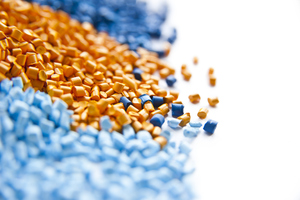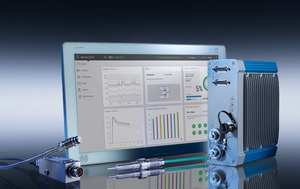
 |
Charlotte Stonestreet
Managing Editor |
| Home> | MACHINE BUILDING & ENGINEERING | >3D Printing & Prototyping | >Quality and sustainability can go hand in hand |
| Home> | MACHINE BUILDING & ENGINEERING | >Machinery | >Quality and sustainability can go hand in hand |
| Home> | CONTROLS | >Monitoring | >Quality and sustainability can go hand in hand |
Quality and sustainability can go hand in hand
17 October 2025
Using recycled materials in plastic injection moulding can change material characteristics and impact quality. So, how can quality and sustainability be combined? Smart process monitoring and control in plastic injection moulding play a key role in answering this question, as Daniel Kormann outlines

RECYCLING IS still primarily associated with the packaging industry. However, plastic waste is generated across all sectors – including the automotive industry, where neither the recyclability of parts nor the use of recycled materials for new components has so far played a significant role. But this is set to change: politicians have recognised the need to take action and are moving to implement increasingly stringent requirements. For example, a 2023 proposal by the European Commission mandates that at least 25% of the plastic used to manufacture a new vehicle must consist of recycled material. In turn, at least 25% of this recycled material is to come from end-of-life vehicles.
The use of recycled materials influences the material characteristics in production. Unlike new material with a known, uniform composition, these recycled materials can vary from batch to batch – and sometimes even within the same batch. Post-consumer plastics in particular tend to have an unknown composition: after all, they can contain everything from yogurt cups to plastic bags. As a result, the material characteristics of these plastics are difficult to assess. However, their composition is just one of several unknowns. Moisture content, potential contamination and the preparation of the granulate can impact the viscosity of the melt further. This means injection moulders must adapt to constant fluctuations in the process that could result in unevenly filled cavities and surface defects.
What can be done if the output material cannot be controlled? The answer is both simple and complicated: if the characteristics of the granulate cannot be controlled, the process must be controlled instead and precisely adapted to the changing material. This ensures that the quality remains identical from one cycle to the next.
Better control
In today’s production facilities, there are already solutions to determine material properties precisely. Demand for additional process control systems specifically for recycled materials is growing. The principle here is: the closer the measurement and control is to the actual product, the more directly injection moulders can intervene in the process – and the better they can control the recycled materials. In plastic injection moulding, the recording and optimisation of the cavity pressure profile has long been an established, essential parameter. It allows manufacturers to optimise pressure curves and find the right switchover point – the moment in which the machine switches from speed control (injection phase) to pressure control (holding pressure phase). If the material characteristics vary significantly, and even from one cycle to the next, the process must be controlled in real time in order to maintain consistent component quality. Moreover, cavity pressure switchover of (multi-cavity) moulds protects against damage in a targeted way by preventing overmoulding.
Maintaining an overview
Software solutions for process monitoring and control that are tailored to all production steps and processes play a key role in the use of recycled materials. Usually, only minor adjustments are needed to stabilise the process; however, they have to be precisely calculated and continually monitored. Corresponding software analyses the measurement data from the ongoing process and determines how to adjust the machine. There are several ways to do this.
One option is to make restarting moulds more efficient. If the mould is started up on a different machine or with a different material batch, a solution like ComoNeo Recover from Kistler ensures that the original process profile can be achieved again as quickly as possible. This is done by reconstructing the optimal cavity pressure curve which was previously calculated. In this way, the system can compensate for differences in material behavior – like a different viscosity – or in machine performance (for example the effect of pressure). If the material characteristics deviate greatly within the same batch from one cycle to the next, closed-loop features that intervene during an ongoing cycle, like ComoNeo Switch, are helpful: they monitor and analyse the cavity pressure in real-time and provide automatic feedback to the machine in order to adapt the switchover process and reach the optimal switchover point in each individual cycle.
Activating individual cavities
In some cases, deviations in material batches are amplified by different flow behavior in the mould: differences in viscosity due, in part, to longer flow paths can result in underfilled or overfilled cavities. To ensure uniform quality of all parts and avoid increased tool wear, it is important to fill every cavity simultaneously if possible. This is made possible by controlling the hot runner nozzles – a feature offered by the software ComoNeo Multiflow, which compensates for these kinds of irregularities.
In summary, it can be said that the higher the proportion of recycled materials, the more frequently deviations in material characteristics will occur. To remain profitable, it is no longer sufficient to simply monitor and sort out bad parts. Today, more in-depth process control systems are required. Suitable technologies that keep the scrap rate low and efficiency in production high already exist. Our experience with these solutions has shown that sustainability and quality in the plastic injection moulding process are not mutually exclusive – as long as it is possible to adapt the process to the material behavior.
Daniel Kormann is head of business development, plastics at Kistler Group





















